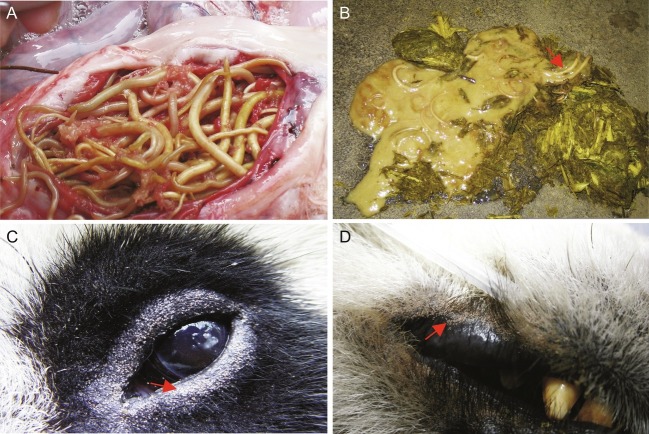Fig. 2.
Selected parasites of the giant panda. (A) The parasitic nematode Baylisascaris schroederi in the gastrointestinal tract of the giant panda, causing obstruction. (B) Baylisascaris schroederi expelled from an infected giant panda following anthelmintic treatment. (C) The mite Chorioptes panda and its typical predilections sites on the eyelid and/or lips (D). Red arrows indicating B. schroederi (B) or skin affected by C. panda (C and D).

